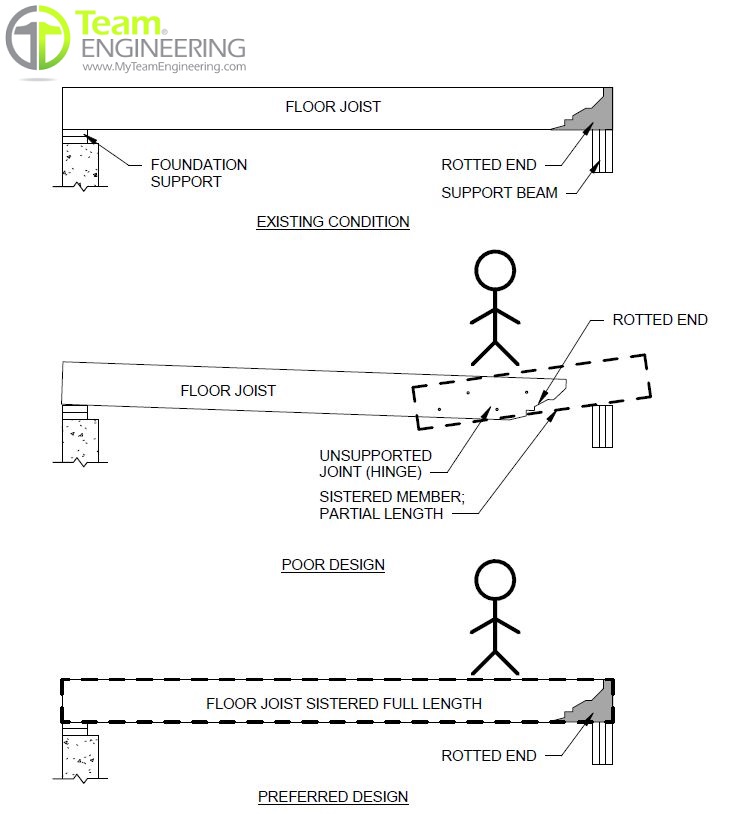
Just Say No to Unsupported Joints in Built Up Wood Floor Joists
By John Turner, P.E.
A recent project really hammered this point home. We began with a discussion of whether wooden floor joists – rotted at one end – really needed to be sistered the entire length. Sistering a joist means attaching a new joist to the original, essentially creating multiple plies, and simultaneously strengthening the existing joist.
The question was asked, if only the last 12” is rotted of a 10’ long wooden floor joist, could we simply sister the last 4’ with a second member of similar size? The simple answer is no.

If the end of the joist is fully rotted, it has zero value at its support when performing a structural analysis. If the joist is only partially sistered, a hinge gets introduced into the structure. The hinge essentially becomes a point where an additional rotation may occur, and in most scenarios, this results in higher reactions, deflections, and even potential uplift concerns.
While it’s true that if we could create a “perfect connection” between the original floor joist and at this hinge connection, then the repaired member could be adequate. The problem is that a “perfect connection” is complex to engineer with wood materials and even harder to implement!
As a result, I had to present to my client the unpleasant news that the joints in the built up floor joists rendered it essentially useless and thus the joists needed to be reinforced with full length members. If you think you’re current home or maybe your contractor might be installing some questionable repairs, give us a call and speak to one of our licensed Professional Engineers today!
More Articles From...
| This Category | Home Repairs, Residential Engineering, Structural Design, Structural Engineering |
| This Author | John Turner, P.E. |
